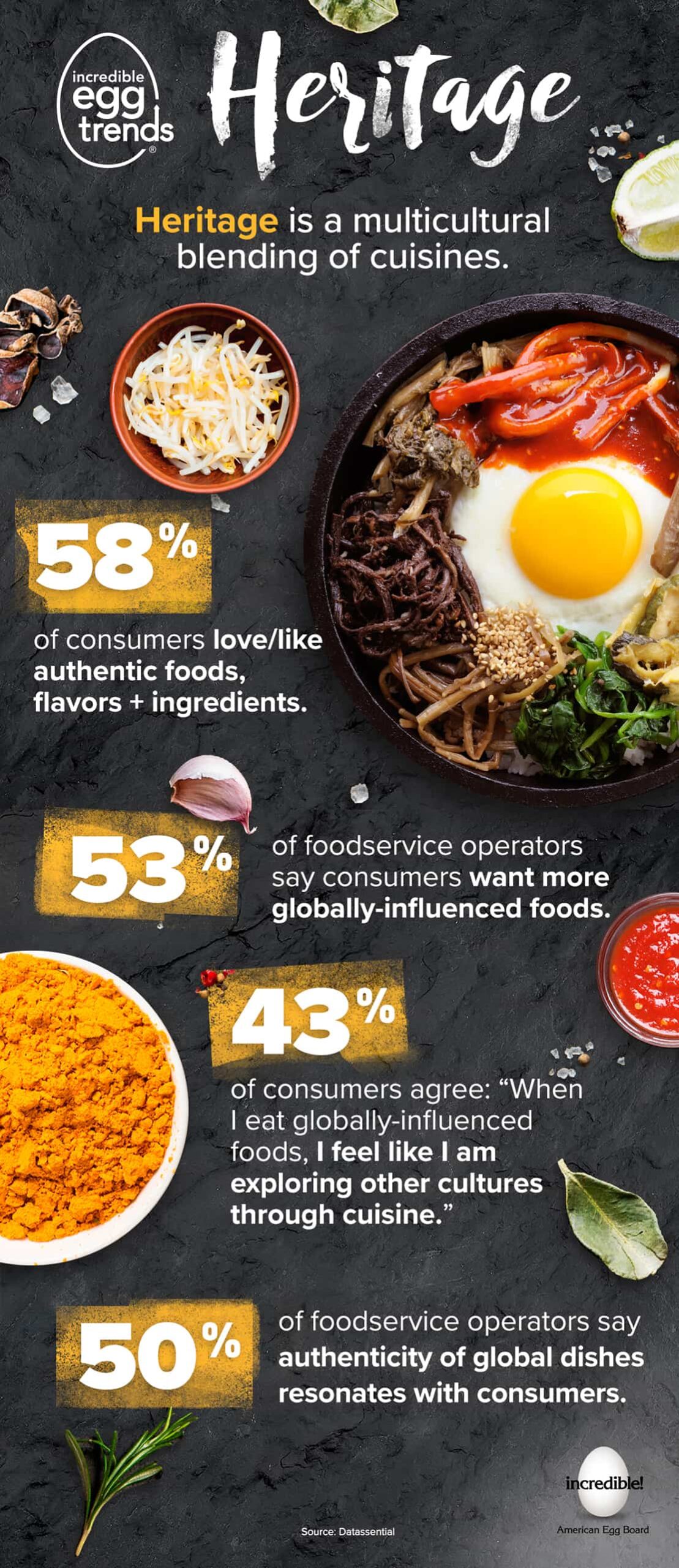Heritage Cuisine

Multicultural Blending
Heritage cuisine is born from the personal terroir of chefs. It’s a return to their personal food roots, and often, a multicultural blending of cuisines. Classically trained chefs bring their culinary skills to their personal food history, ofttimes melding haute cuisine with multicultural, humble cuisine. Dishes once reserved for home or family meals before service are now making appearances on restaurant menus. And eggs are a natural part of heritage cuisine. They’re commonly enjoyed around the world as a delicious and versatile source of high-quality protein.




TIPS & TRICKS
“In terms of building flavor and memorable experiences on a plate, it’s very important to have foreground flavor and sort of mid-ground flavor and background flavor. I kinda think I get that from my dad who is a musician. When you’re creating, you have these undertones and a strong bass and vocals and drums. It’s the same process of art and creation. I’m not going to just add kosher salt. I’m going to add some in the beginning, in the middle, in stages, and then maybe some finishing salt…and that’s going to invite you to want to take the next bite”
— Chef Nyesha Arrington



5 FACTS YOU MIGHT NOT KNOW ABOUT EGGS
- Eggshell color doesn’t affect quality.The only difference between eggs with white and brown shells is the breed of hen.
- Eggs are one of the most concentrated sources of choline in the American diet.Choline is a key nutrient required for brain growth.
- Eggs are one of the few food sources of vitamin D.Vitamin D plays an important role in calcium absorption and the immune system’s defense against diseases.
- Eggs contain carotenoids.Carotenoids, lutein and zeaxanthin are present in eggs, both of which are important for brain and eye health.
- Older eggs are easier to peel when hard boiled.
Source:
1. Office of Dietary Supplements – Choline. (2019). Retrieved from https://ods.od.nih.gov/factsheets/Choline-HealthProfessional/
2. Schwarzenberg SJ and Georgieff MK, AAP COMMITTEE ON NUTRITION. Advocacy for Improving Nutrition in the First 1000 Days to Support Childhood Development and Adult Health. Pediatrics. 2018;141(2)e20173716
3. Office of Dietary Supplements – Vitamin D. (2019). Retrieved from https://ods.od.nih.gov/factsheets/VitaminD-%20HealthProfessional/
4. Liu, X., Baylin, A., & Levy, P. (2018). Vitamin D deficiency and insufficiency among US adults: prevalence, predictors and clinical implications. British Journal Of Nutrition, 119(8), 928-936. doi: 10.1017/s0007114518000491
5. Wu, J., Cho, E., Willett, W., Sastry, S., & Schaumberg, D. (2015). Intakes of Lutein, Zeaxanthin, and Other Carotenoids and Age-Related Macular Degeneration During 2 Decades of Prospective Follow-up. JAMA Ophthalmology, 133(12), 1415. doi: 10.1001/jamaophthalmol.2015.3590















